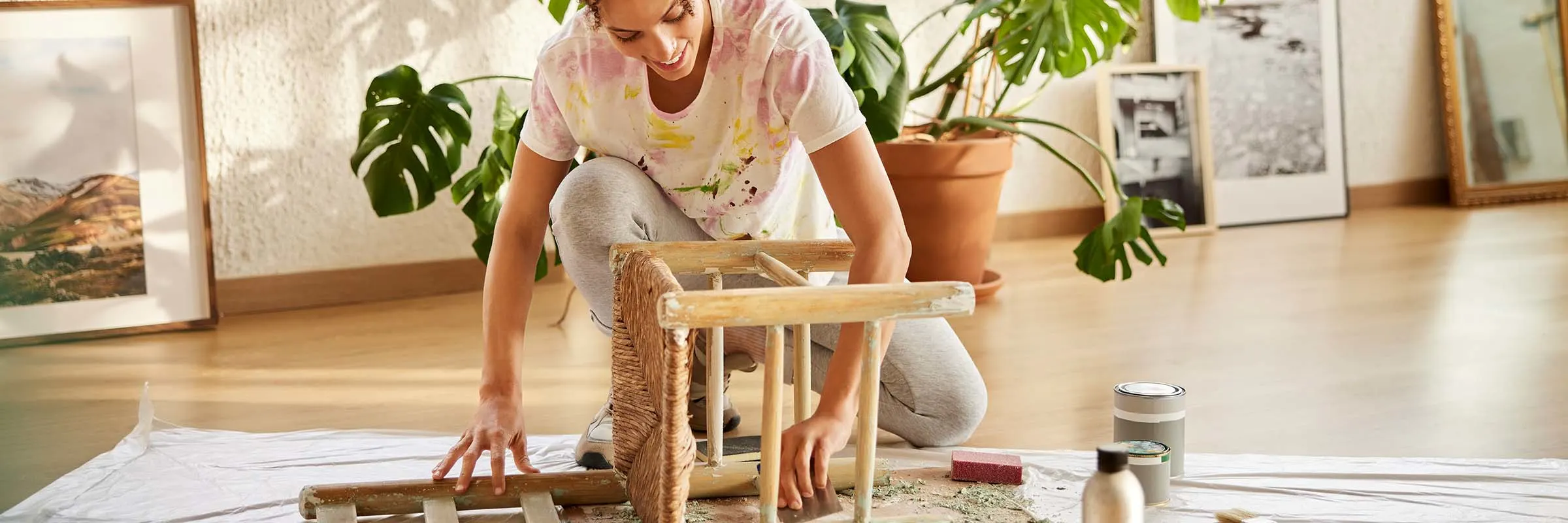Whether you’re looking to increase the value of your home in advance of a sale or hoping to spruce up your spaces to make them more your own, a renovation project could be in your future. The home remodeling market has never been hotter, with 67% of homeowners preferring to renovate their current home to better meet their needs than move, according to the 2024 State of Home Spending Report. Still, many excited homeowners go over budget to finish projects from a lack of preparation. Before tearing out drywall or installing a new backsplash, it’s important to understand the estimated costs involved to keep your home renovation projects on track and on budget.
Read more: Save for your next home renovation project with Ally Bank's buckets and boosters
Key factors in estimating renovation costs
The average cost to remodel a house is roughly $52,000. While most renovations fall between about $19,488 and $88,406, some higher-end remodeling projects average $150,000.
Many factors contribute to this cost, including:
Square footage
Home type and age
Location
High-end vs. budget-friendly materials
Room-specific renovation costs
Depending on which spaces you choose to upgrade, you’ll find a wide range of projects and associated costs.
Kitchen remodel
The kitchen is a popular choice for homeowners to upgrade since it’s one of the most frequented rooms in the house, and at the top of many potential buyers’ lists when looking for a new home. Before you get cooking on a kitchen reno, keep in mind that the average cost to remodel this room is nearly $27,000, with most homeowners paying somewhere between $14,500 and $41,500. It’s typically one of the more expensive areas to redo because of appliance and countertop costs. And, while new tile and updated plumbing can increase your home’s value, they can increase your bill, too.
Bathroom remodel
A refreshed bathroom is another priority on homeowners’ (and potential buyers’) renovation wish lists. But before you grab the grout, consider that plumbing changes, new fixtures and tile work can all add up. Depending on the size of your bathroom, a remodel could cost anywhere from $5,000 (average cost of a half-bath) to $30,000 and up (average cost of a primary bathroom).
Living spaces and bedrooms
The cost to spruce up a living space or bedroom varies based on flooring choices and wall treatments. In general, expect to pay between $5,000 and $10,000 for a living room remodel and $1,500 to $5,500 for a bedroom remodel.
Exterior improvements
Home exterior painting, landscape installation and other changes to your outdoor spaces can cost anywhere from $6,000 to $20,000 depending on the project and materials used. The good news is that even small improvements can have a big impact on your home’s curb appeal and value.
While most renovations fall between $19,488 and $88,406, some higher-end remodeling projects average $150,000.
Additional home renovation costs
A home renovation involves more than fresh paint and shiny finishings. Plan for these additional costs:
Permits and regulations: Electrical and mechanical work, as well as structural changes and new construction typically requires permits that cost between $500 and $2,500. Check your local rules or ask your contractor.
Labor costs: The various contractors needed to complete your project can charge either hourly or based on a percentage of the final price.
Unexpected expenses: As a rule of thumb, add 10% to 20% to all home renovation costs for unplanned challenges and unforeseen overages to keep your renovations under budget.
Ways to save on renovation costs
The cost of a home remodel can add up quickly, but you can take measures to manage your budget, including:
Do it yourself: Painting a room or installing new landscaping are perfect opportunities to save money and flex your DIY skills. More complex tasks might require a licensed professional’s services.
Shop floor models: Buying an appliance off the showroom floor can come with as much as a 20% discount.
Pay in cash: Rather than taking out a loan or using your credit card — both of which can yield interest payments — paying in cash can help you avoid accumulating debt. If you’re ready to start putting money away for your dream renovation project, opening an Ally Bank Savings Account can help you get one step closer.
Make it all affordable
Home renovation costs can add up quickly and budgeting for it all isn’t easy. By mapping out your priority projects and the potential costs before demo day, you can bring your home renovation to fruition while protecting your financial future.



